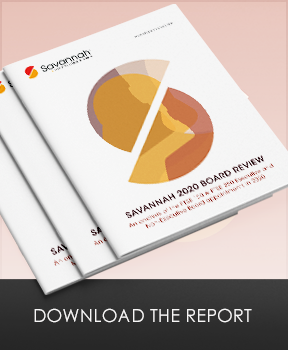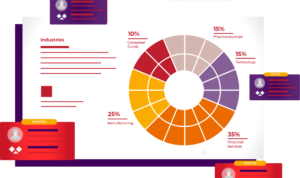An analysis of the FTSE 100 & FTSE 250 Executive and Non-Executive Board appointments in 2020
INTRODUCTION
 Welcome to our analysis of the board appointments to the FTSE 100 and FTSE 250 listed companies in Q4 2020 and our deeper analysis of the full year.
Welcome to our analysis of the board appointments to the FTSE 100 and FTSE 250 listed companies in Q4 2020 and our deeper analysis of the full year.
We now have three full years of analysis and trends from our close monitoring of the FTSE 350 board appointments. For readers interested in tracking the developments for themselves, here are our reports for the full year 2018 and for the full year 2019. Following our 2018 report, we have continued to publish quarterly updates allowing us to see the emerging trends, most particularly the rapid rise in the number of women in the boardrooms and that, in turn, revealed the yawning gap between the relative numbers of women in non-executive director roles and executive director roles, one of the most serious governance issues facing us. But perhaps more surprising was seeing the dramatic fall off, quarter by quarter, in executive director (mainly CEOs and CFOs) appointments tracking the ever worsening Brexit inspired political and social chaos during 2019. And now we see how that has flowed through to 2020, overlaid by the pandemic driven lockdowns and market spasms. The numbers suggest, surprisingly, that the events of 2019 caused more of a slowdown in executive director changes than the pandemic but this is still to play out. More on this later.
Speaking of the rapid rise in the number of women in the boardrooms, the Hampton-Alexander Review has just published its fifth and final report. The fundamental targets for female representation in the boardrooms have been achieved and the momentum is in place to continue the Government backed, business led drive for more women in the vital executive committee roles. It will be no surprise to readers of this report that the majority (52%) of non-executive director appointments to the FTSE 350 boards in 2020 were women. We have made clear in our reports our concern for the lack of (and the lack of focus on) women in the executive director roles on the FTSE 350 boards and we are pleased we can now report some progress with women taking close to 20% of the executive director appointments in 2020.
In this same context, we now report that 24% of the chair appointments in 2020 were women. In our Q3 2020 report we noted that women then made up only 10% of the FTSE 350 chair roles. Looking ahead at appointments made to date in 2021 and announcements of chair successors still to take up their roles, this is certainly a trend to watch. And consistent with this trend, we have adopted “chair” rather than “chairman” as the preferred nomenclature for this top board role. More on the chair appointments later, including an analysis of the internal versus external appointments.
The Hampton-Alexander Review committee and the executive team led by Denise Wilson have been very effective and are to be congratulated for their business led, data driven approach. Targets were absolutely necessary and holding boards to account has worked in successfully achieving real improvements in gender diversity across the FTSE 350 boards and in creating an environment for continued change. And this was, very importantly, achieved without legislated quotas. Back in November we hosted a webinar on ‘The Unfinished Business of Boardroom Gender Diversity’, with Denise on a panel with Babcock Chair Ruth Cairnie and former BHP CEO Andrew Mackenzie, and the report from that discussion makes interesting reading.
We also remind our readers of the concerns we highlighted in our Q3 2019 report on the issues confronting Remuneration Committees as they respond to the impact of the coronavirus inspired turmoil on executive pay. Our concerns are now borne out by the pension giant Fidelity and the Investment Association in warnings to FTSE 350 companies against paying bonuses to executives of companies that accepted taxpayer funds – but there are bigger, more complex issues to come.
Q4 2020
To provide continuity from our reports covering the first three quarters of 2020, let’s look at the final quarter of the year before moving onto the full year picture.
In Q4, the FTSE 100 companies appointed 34 nonexecutive directors, up from only 16 in the same period last year, and 5 executive directors, up from only 2 in Q4 2019. While women took 20 (59%) of the non-executive appointments, there was only 1 (20%) woman amongst the 5 executive directors. That was Anna Manz who left Johnson Matthey to take up the CFO role at London Stock Exchange in November.
In Q4 2020, the FTSE 250 companies appointed 43 (49 in Q4 2019) non-executive directors and 10 (4 in Q4 2019) executive directors. Again, women were in the majority at 51% of the non-executive appointments but made up only 2 (20%) of the 10 executive director appointments with New Zealander Jackie Calloway taking the CFO spot at Coats and Canadian Rita-Rose Gagné appointed CEO of Hammerson. Rita-Rose’s appointment takes the number of female CEOs in the FTSE 250 to 9, as against 175 men, and the number of female executive directors to 46, as against 367 men. There are, in fact, only 184 CEOs in the FTSE 250 as there are 66 investment trusts that do not have CEOs. Slow progress but more on this later.
IMPACT OF THE PANDEMIC
It is hard to judge the full impact of the pandemic on the executive director appointments. The 15 FTSE 350 executive director appointments in Q4 are certainly down on the previous three quarters but certainly well up on the 6 appointed in Q4 2019. Our report for the full year 2019 clearly tracked the decline in appointments as the Brexit chaos choked us that year. The first two quarters of 2020 show the catch up but even this was likely constrained by the lockdown and immediate economic hit from the coronavirus. Perhaps the best indicator comes from a comparison against 2018. In that year, there were 118 executive director appointments followed by only 68 in 2019 rising to (again only) 88 in 2020. Our conclusion is that there was a clear Brexit hit in 2019, followed by a pandemic-muted catch up in 2020. We will still be seeing this play out through, at least, the balance of 2021 and most likely into 2022. Watch this space.
Q4 BLACK, ASIAN & MINORITY ETHNIC APPOINTMENTS
BAME appointments to the FTSE 350 companies at 17% represents progress overall but led largely by the FTSE 100 appointments of 10 (29%) BAME representatives while BAME appointees made up 12% of the FTSE 250 non-executive director numbers. As it is for gender diversity, the FTSE 350 performance at the executive director level is less than stellar. There were no BAME representatives amongst the FTSE 100 executive director appointments and only 1 out of 10 of the FTSE 250 executive director appointees is BAME.
The FTSE 100 led the charge on gender diversity amongst its non-executive board members and seems to be doing the same now for ethnic diversity. A reminder that the Government’s target for ethnic diversity is to see the “boards of the biggest British companies” reflect the ethnic mix of the UK population which is 14% BAME (see the Parker Review Committee Final Report, October 2017). We also recognise that when dealing with small numbers, the percentage changes are exacerbated – one out of ten equals under-performance and two out of ten is dramatic over-performance. It’s the trend that is important and we will watch this over coming quarters.
2020 — YEAR IN REVIEW
NON-EXECUTIVE DIRECTORS
In 2020, the FTSE 100 appointed 143 non-executive directors, almost exactly split between men (71) and women (72). Significantly more appointments (48) were made in Q2 than in the other periods although this is not surprising as it aligns with the AGM season. As we note below, we didn’t see this same bump in the FTSE 250 appointments. Amongst the FTSE 100 appointments were 20 BAME representatives.
Interestingly, 2020 saw a big increase (+40%) in non-executive director appointments to FTSE 100 companies over the numbers appointed in 2019 (104) and 2018 (100). There is no obvious reason for this jump although we expect some rollover in appointments that would have been made in 2019 except for the Brexit paralysis but we didn’t see anything nearly as dramatic (+8%) in the FTSE 250 and as that index better reflects UK companies.
The FTSE 250 companies appointed 205 non-executive directors, a decline from 2019 (219 appointments) and 2018 (232 appointments). Women made up 108 (53%) of those appointments and there were 17 (8%) BAME representatives. While there is no bias towards the AGM season, the appointments were certainly not spread evenly across the year – there were 63 in Q1 and only 43 in Q4 – with the Q1 appointments almost certainly reflecting the “Boris bounce”.
EXECUTIVE DIRECTORS
Executive director appointments have not yet recovered to 2018 levels. The 2020 executive director appointments clearly include a catch up following the slump induced by the crippling Brexit chaos in 2019 but this clouds the hit from the pandemic slowdown in 2020.
The FTSE 100 reported 33 new appointments up 65% from 2019 which in turn was down almost 50% from 2018. In total, the FTSE 350 appointed 88 executive directors in 2020, up nearly 30% from 2019 but still 25% down on the 118 appointments in 2018. We expect that we will continue to see the impact of the pandemic reflected in top executive appointments in the first half of 2021, and it will possibly be even longer before we see these appointments back at pre-Brexit/Covid levels of activity.
Of the 88 executive director appointments to the FTSE 350 companies in 2020, 17 (almost 20%) were women, evenly split across the FTSE 100 and FTSE 250 appointments. Looking more closely, the FTSE 100 appointed 12 new CEOs in 2020, 3 (25%) of whom are women, Amanda Blanc at Aviva, Susan Davey at Pennon Group and Milena Mondini, CEO designate at Admiral Group. The FTSE 250 managed only one woman, Rita-Rose Gagné at Hammerson, amongst its 17 CEO appointments.
While the gender diversity trend is positive, BAME appointees made up only 5% of the FTSE 350 executive director appointments. With a target of 14% (matching the BAME representation in the national population), the BAME appointments to the boards at both non-executive and executive director levels must consistently significantly exceed 14% if progress towards achieving that target is to be realised in the medium term.
CHAIR APPOINTMENTS
The FTSE 350 companies made 62 chair changes in 2020, 14 in the FTSE 100 and 48 in the FTSE 250. These numbers include David Weymouth who stepped aside from the chair role at OSB in favour of Sir George Williamson on the merger of OSB and Charter Court and then resumed the role when Sir George retired in Q1 2020. This includes Gareth Penny who is recognised as a ‘new’ appointment in 2020 because of the listing in Q1 2020 of Ninety One Plc (previously Investec Asset Management) of which he has chaired since 2019. Also included is Claire Milne who was appointed interim chair at Playtech after a year-long search for a successor to Alan Jackson was halted due to the difficulty of concluding that process in the face of the pandemic restrictions. And Lawrence Stroll should get a mention as the only executive chair appointment in 2020, coming on the back of his investment in the rescue of the iconic Aston Martin Lagonda. Stroll’s appointment is also recognised in the executive director numbers discussed earlier. There are currently 11 executive chairs in the FTSE 350,
As promised in our Q1, 2020 report, it will be interesting to develop a picture of the preference for external appointment versus internal chair succession. It will take some time to see a clear result here but we can report that, in 2020, the FTSE 100 changes reflect a clear preference (64%) for external appointments while the FTSE 250 clearly prefers to grow their own with 60% of the appointments being made from the existing director pool. For these purposes, we are treating anyone appointed to the board as “chair designate” as an external appointment even if they didn’t take up the role immediately. We will look at this again at the end of 2021 to see if these are imbedded bias or just the roll of the dice.
Of the 14 FTSE 100 chair appointments, 4 (29%) are female while 11 (23%) of the 48 FTSE 250 chair appointments are female.
Going back to our introductory comments, the work of the Hampton-Alexander Committee and the earlier Davies Committee has indeed been transformational in driving change in gender diversity in the boardrooms of UK plc. And while the numbers we report reflect that transformation, they also project the magnitude of the deficit that still exists. Only 12% of the FTSE 350 chairs are women and only 6% of the FTSE 350 CEOs are women. There is still work to be done!




